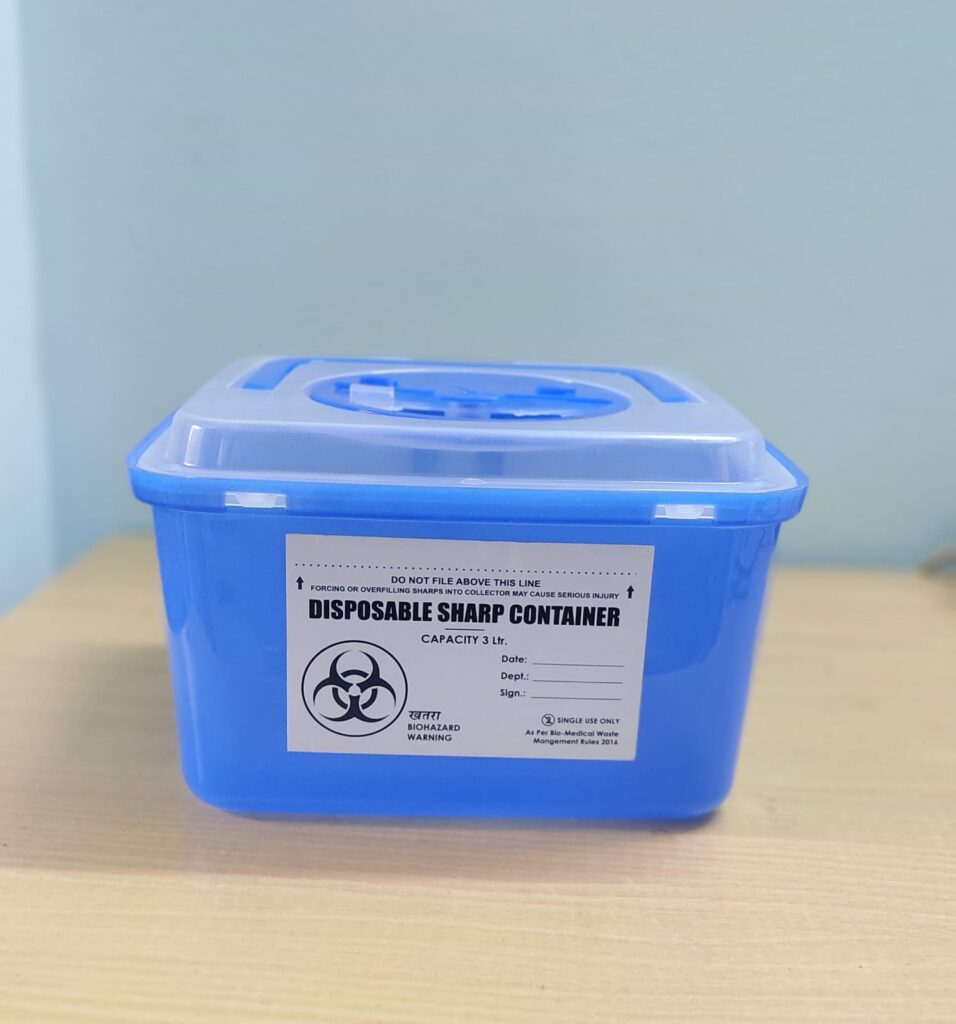Products
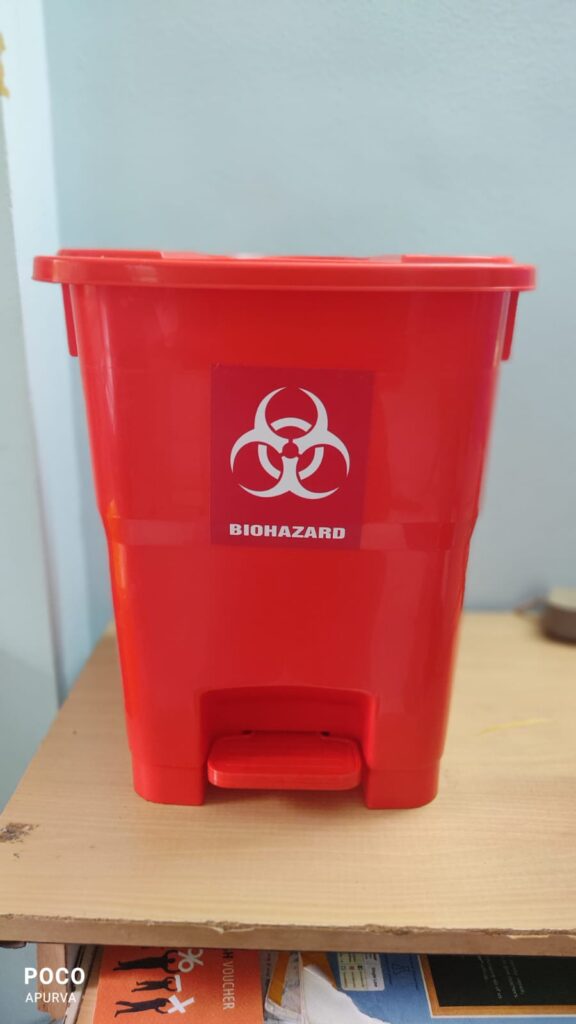
Focus on Color Coding and Segregation
Available in all sizes
The Bio Medical Waste Dustbin is much more than a receptacle—it is a coded signal system that supports effective medical waste management through segregation. Proper segregation is the first and most critical step in the biomedical waste disposal process, and color-coded dustbins are the primary tools for achieving it.
Each bin color has a regulatory purpose:
• Yellow: For human anatomical waste, soiled dressings, cotton, and expired medicines.
• Red: For contaminated but recyclable waste like plastic syringes, tubing, catheters.
• White/Translucent: For sharps such as needles, scalpels, and blades.
• Blue: For broken glassware, ampoules, and metallic body implants.
These bins help healthcare professionals dispose of waste at the point of generation, minimizing contact and risk. Clear labeling and biohazard symbols guide even new or untrained personnel in using the bins correctly. Additionally, this system improves efficiency during collection and reduces the chances of mixing hazardous with non-hazardous waste.
Dustbins made for this purpose are designed with secure lids to prevent spillage and are easy to clean and disinfect. Many hospitals now opt for pedal-operated dustbins, which allow for hands-free operation, further reducing contamination risks.
Not adhering to the color-coding system can result in severe legal penalties for medical institutions under India’s Bio-Medical Waste Management Rules. Hence, investing in a compliant set of dustbins is not just about safety—it’s also about maintaining your healthcare facility’s reputation and operational integrity.
By implementing a strict color-coded dustbin system, healthcare providers can safeguard public health, protect workers, and contribute to a cleaner, safer environment.
Focus on Compliance & Safety
Available in all sizes
A Bio Medical Waste Container is a specialized vessel used to collect, store, and transport waste generated from healthcare activities. This includes items like used needles, bandages, human tissues, expired medications, and laboratory waste. These containers are designed to ensure safe handling and proper segregation of potentially infectious materials to prevent health hazards and environmental contamination.
In India, the Bio-Medical Waste Management Rules, 2016 set strict guidelines for the disposal of medical waste. Hospitals, clinics, laboratories, and even small healthcare facilities are legally required to use color-coded containers based on the type of waste they generate. For instance, yellow containers are used for human anatomical waste, while red ones are for contaminated recyclable waste.
High-quality bio medical waste containers are typically made of durable plastic, are leak-proof, and come with secure lids to minimize exposure. Many are also puncture-resistant to safely dispose of sharp objects like scalpels and syringes. Some even come with pedal-operated lids to promote hands-free operation, reducing the risk of cross-contamination.
By using certified containers, healthcare facilities not only ensure compliance but also protect staff, patients, and waste handlers from exposure to infectious agents. These containers are often labeled with biohazard symbols and specific instructions to help workers handle waste safely and efficiently.
In summary, a reliable bio medical waste container is a crucial element in medical waste management. It helps healthcare providers comply with regulations, prevent disease transmission, and promote a safer, cleaner environment both inside and outside medical facilities.
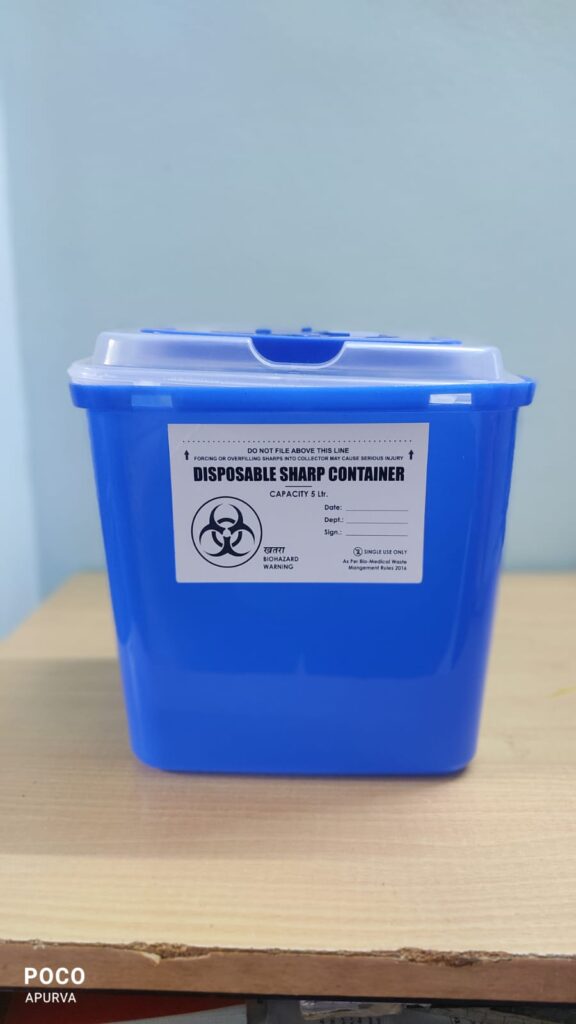
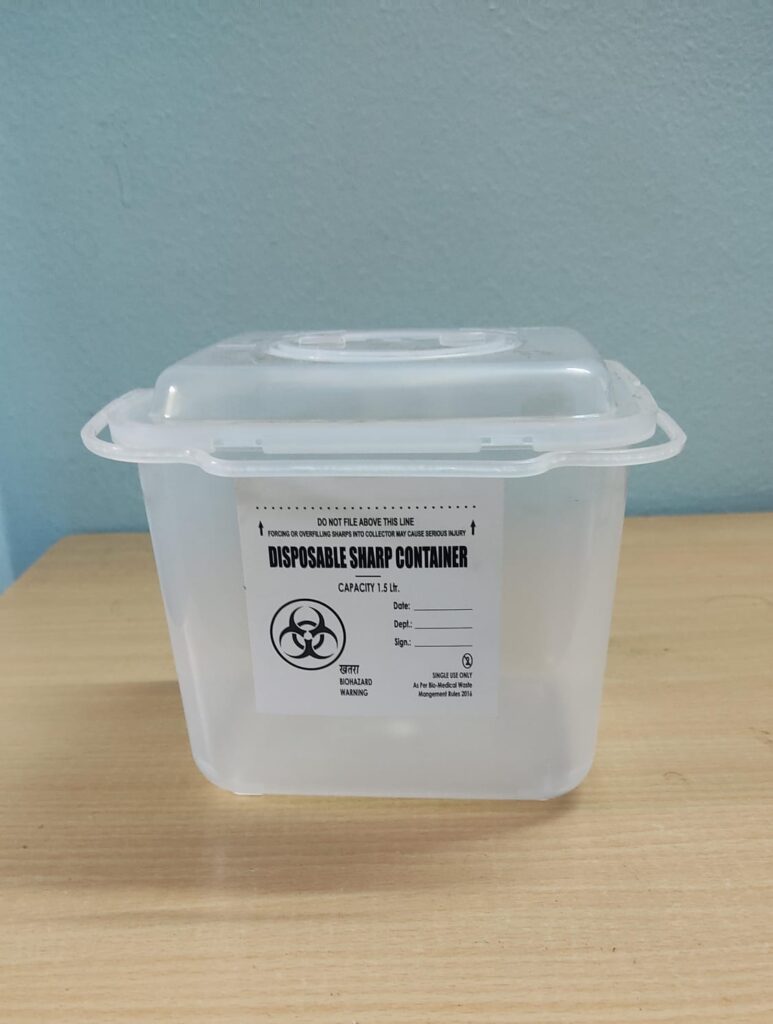
Use in Small Clinics and Labs
Available in all sizes
A Bio Medical Waste Container is not just for large hospitals. In fact, its role becomes even more critical in small clinics, dental offices, diagnostic centers, and pathology labs. These establishments often generate a diverse range of biohazardous waste but may not always have a full-scale waste management system. This is where portable, easy-to-use bio medical waste containers come into play.
Smaller medical facilities typically deal with items like blood-soaked gauze, injection vials, sharps, swabs, and cotton. These materials, if not handled correctly, can pose serious health risks. By placing color-coded containers in key areas such as treatment rooms, sample collection areas, and examination chambers, these facilities can significantly reduce the risk of infection and meet the standards set by pollution control boards.
Bio medical waste containers designed for such setups are usually lightweight, come in various sizes (ranging from 5 to 20 liters), and include secure lids. Their compact nature makes them ideal for tight spaces without compromising on safety.
These containers should be regularly disinfected and replaced as per compliance guidelines. Labels and printed symbols on the body of the container guide staff to dispose of waste correctly and avoid cross-contamination. Moreover, color coding (yellow, red, white, and blue) ensures correct segregation of waste types—an essential step before sending waste to authorized treatment and disposal facilities.
Using approved bio medical waste containers is not optional; it is a mandatory and responsible step for any healthcare establishment. Investing in good-quality containers can save clinics from fines, protect employees, and improve patient trust.
Dustbins for Dental and Diagnostic Clinics
Available in all sizes
A Bio Medical Waste Dustbin is especially vital in smaller healthcare facilities like dental clinics, physiotherapy centers, diagnostic labs, and veterinary clinics. While these places may not produce the same volume of waste as large hospitals, the nature of the waste is equally hazardous and requires proper handling and disposal.
Dental and diagnostic clinics regularly dispose of items like used gloves, cotton swabs, X-ray films, disposable masks, and syringes. If not discarded in appropriate biomedical waste dustbins, these materials can spread infections to patients, staff, and waste collectors.
Typically, these setups use smaller-sized color-coded dustbins (5L to 20L capacity), which can be easily placed under work counters or near treatment areas. Foot pedal-operated lids are preferred for touch-free disposal. Wall-mounted options are also available for space-saving and easy access.
Segregation at source is key. Yellow bins are used for soiled waste and dressings, while red ones handle plastic waste like tubes and gloves. Sharp instruments go into white translucent containers, and X-ray films or broken glass pieces into blue ones.
For these facilities, using proper dustbins also ensures compliance with local pollution control regulations and avoids penalties or legal notices. More importantly, it enhances the image of the clinic as a safe, modern, and hygienic healthcare provider.
These dustbins should be cleaned daily and replaced if cracked or broken. Regular staff training on using these bins correctly can further boost safety and waste management standards.
In short, the use of bio medical waste dustbins in small clinics is a sign of professionalism, responsibility, and commitment to public health and the environment.
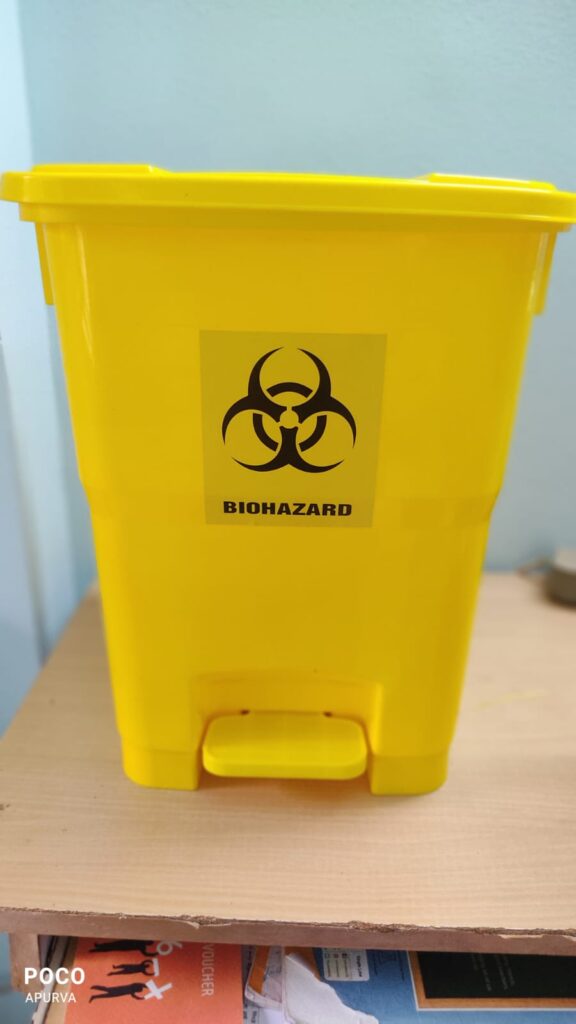
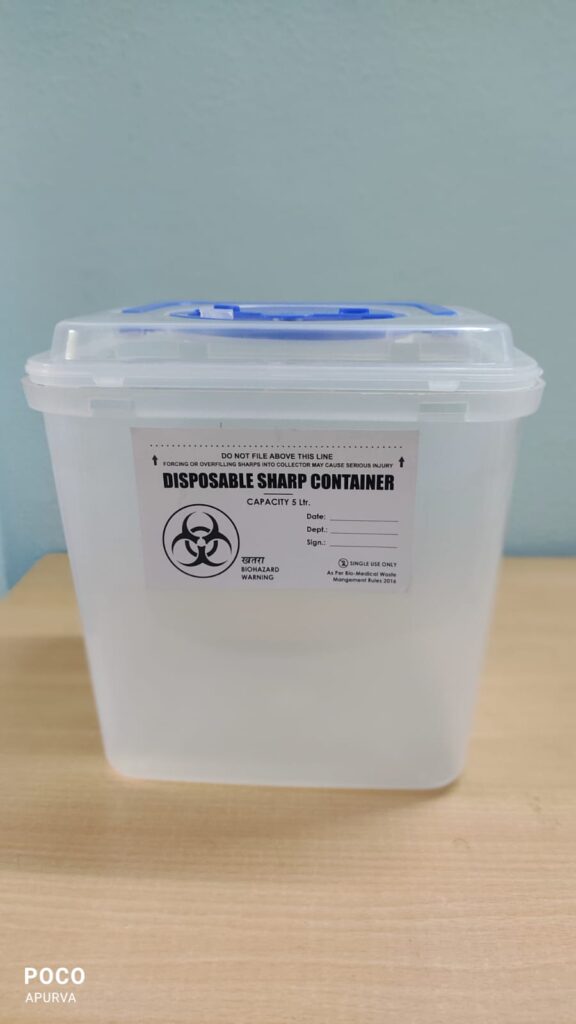
Manufacturing & Design Aspects
Available in all sizes
Bio Medical Waste Containers are specially designed units built to store and segregate potentially infectious medical waste. These containers are manufactured using high-density polyethylene (HDPE) or other medical-grade plastic that resists corrosion, chemicals, and punctures.
The design of these containers plays a vital role in ensuring safe disposal practices. Most containers come with air-tight lids, locking mechanisms, and ergonomic handles for easy transportation. The container body is usually thick and durable, allowing it to withstand rough handling during transport from the healthcare facility to the waste treatment plant.
Some containers are designed with pedal-operated lids, allowing healthcare professionals to dispose of waste without touching the container—minimizing infection risks. Others come with a built-in bag-holding ring, which helps in securely placing disposable bags inside for easy removal once full.
Manufacturers also follow strict norms for color coding—yellow, red, white, and blue—to indicate different types of waste such as anatomical waste, sharps, soiled dressings, or glassware. Moreover, the containers are often printed with hazard symbols, warning labels, and usage instructions to prevent accidental misuse.
Quality assurance is a top priority in the production of bio medical waste containers. Products are typically certified by pollution control boards or tested under biomedical waste handling guidelines. Reusability is also considered: certain types of containers can be sterilized and reused, contributing to environmental sustainability while reducing operating costs.
In conclusion, when selecting a bio medical waste container, it’s important to consider factors like size, durability, usability, and compliance certifications. A well-designed container ensures the safe, hygienic, and compliant handling of hazardous waste, making it indispensable for modern medical waste management systems.
Role in Infection Control
Available in all sizes
A Bio Medical Waste Container is a frontline defense tool in infection prevention and control strategies for healthcare settings. Whether in hospitals, clinics, or emergency care centers, these containers serve to isolate infectious waste before it can pose harm to staff, patients, or the environment.
One of the major concerns in healthcare environments is the transmission of infections like Hepatitis B, Hepatitis C, and HIV, which can spread through improperly handled sharps and contaminated waste. Bio medical waste containers are designed specifically to minimize these risks. By offering a secure, color-coded, and labeled containment system, these units ensure that each type of waste—sharps, pharmaceuticals, human tissues, or chemical waste—is safely separated and stored.
Most bio medical waste containers used in infection control systems are designed for single-hand operation, allowing the user to dispose of items without touching the lid or the interior. This reduces contact points and chances of infection. Additionally, containers with a built-in tamper-proof locking system ensure that once sealed, they cannot be reopened, thus preventing unauthorized access and accidental exposure.
Disposal of waste into the wrong container can lead to contamination, exposure, and even regulatory penalties. Therefore, the role of a well-designed container is not just functional but also educational. Printed instructions and international biohazard symbols on the container serve as constant visual reminders of the importance of correct disposal procedures.
These containers are used extensively in intensive care units (ICUs), operation theaters, maternity wards, and pathology labs—areas where medical waste is frequently generated. When incorporated into an organized biomedical waste management plan, these containers significantly reduce the risk of disease spread and help create a safer healthcare environment.
